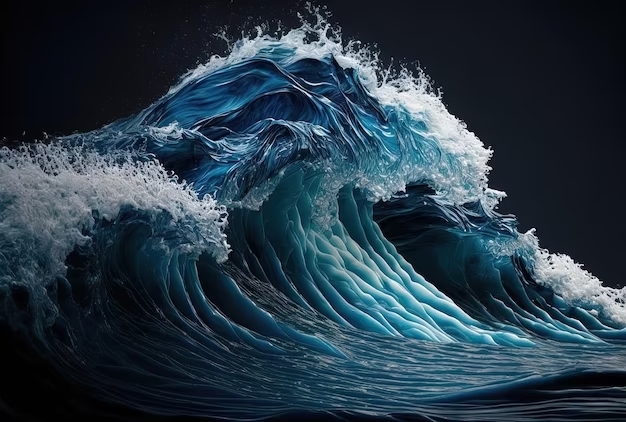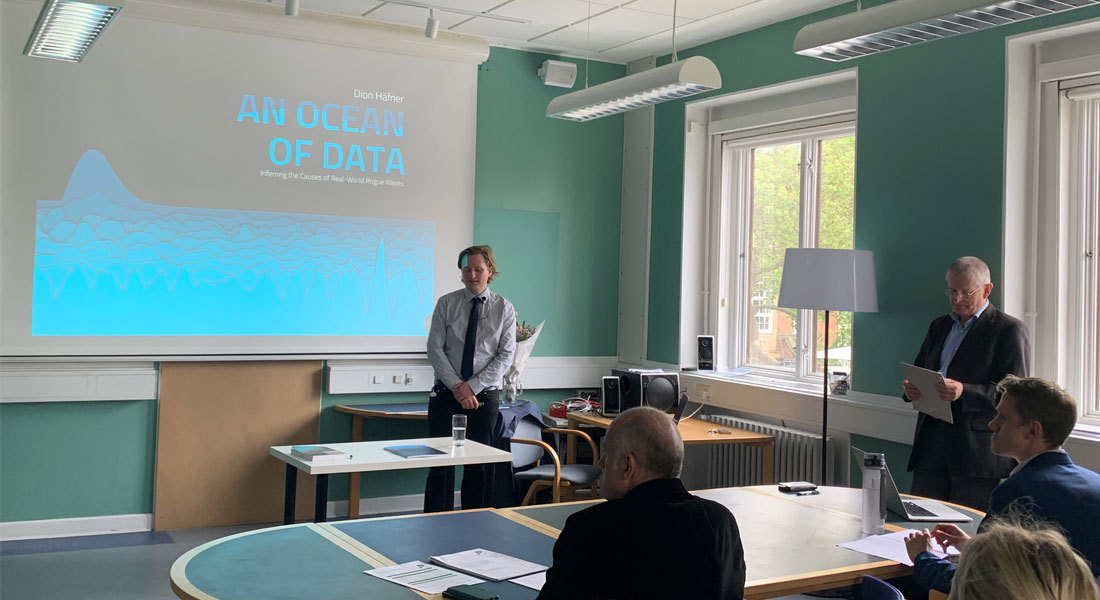Discovering a real-world model of rogue waves with machine learning

Researchers have successfully developed a practical model for predicting rogue waves in real-world ocean settings using machine learning algorithms. This development could have significant implications for the safety of seafarers and coastal communities.
Rogue waves, also known as monster waves, have posed a significant threat to ships and offshore structures for centuries. These waves can reach heights of up to 26 meters and have long been the subject of sailor's legends. While the first rogue wave was measured and captured by digital instruments in 1995, the scientific understanding of these waves has been limited to anecdotal evidence and sailor's tales until recently.
In a groundbreaking study, researchers at the University of Copenhagen's Niels Bohr Institute have utilized artificial intelligence (AI) methods to discover a mathematical model that predicts the occurrence of rogue waves. By analyzing vast amounts of ocean movement data, they have been able to determine the likelihood of encountering a monster wave at sea. This discovery is essential for the shipping industry as it provides a tool to assess the risk of encountering dangerous waves and allows for the selection of safer routes.
Rogue waves have always been a topic of fascination for scientists and sailors alike. These enormous waves, seemingly appearing out of nowhere, pose a grave danger to ships and offshore platforms. With the advent of digital instruments and AI technology, researchers have been able to shed light on the causes and characteristics of rogue waves.
Artificial intelligence played a crucial role in unraveling the mysteries of rogue waves in the study conducted by researchers from the Niels Bohr Institute. Using various AI methods, including symbolic regression, the researchers were able to transform over a billion waves' worth of data into a mathematical model. Unlike traditional AI methods that provide single predictions, symbolic regression produces an equation that describes the recipe for a rogue wave.
Researchers from the Niels Bohr Institute have discovered a mathematical model that predicts the occurrence of rogue waves. To develop their model, they combined a vast amount of data on ocean movements and sea states. They collected wave data from buoys in 158 different locations and amassed over 700 years' worth of wave height and sea state information. This dataset, consisting of more than a billion waves, helped the researchers identify the variables that contribute to the formation of these extreme waves through machine learning algorithms. 
The researchers' study revealed that rogue waves are not as rare as previously believed. Their dataset registered over 100,000 waves that met the criteria for rogue waves. This means that there is approximately one monster wave occurring every day at a random location in the ocean. However, not all of these waves are of extreme size, with some being less than twice the height of surrounding waves.
The most dominant factor that contributes to the formation of rogue waves is a phenomenon known as "linear superposition." This concept occurs when two wave systems cross over each other and reinforce one another for a brief period, increasing the chance of generating high crests and deep troughs, giving rise to extremely large waves. This finding contradicts the long-held belief that rogue waves are primarily caused by the merging of two waves.
The discovery of the mathematical model has significant implications for the shipping industry. With approximately 50,000 cargo ships sailing worldwide at any given time, encountering a monster wave is a constant concern. By utilizing the researchers' algorithm, shipping companies can assess the risk of encountering dangerous waves and plan alternative routes accordingly. This newfound ability to predict the occurrence of rogue waves will undoubtedly enhance safety in maritime transportation.
The researchers have made both their algorithm and research publicly available, along with the weather and wave data they deployed. This accessibility allows interested parties, such as public authorities and weather services, to calculate the probability of encountering rogue waves easily. The researchers' algorithm provides transparent intermediate calculations, making it more understandable and relatable to humans. This transparency is a significant step towards bridging the gap between AI and human understanding.
In conclusion, the discovery of the mathematical model that predicts the occurrence of rogue waves is a significant milestone in understanding and mitigating the risks associated with these extreme ocean phenomena. The researchers from the Niels Bohr Institute have harnessed the power of AI to analyze an enormous dataset and identify the causal variables that contribute to the formation of rogue waves. This newfound knowledge will undoubtedly enhance safety in the shipping industry and contribute to a better understanding of the physics behind these awe-inspiring natural phenomena.

 How to resolve AdBlock issue?
How to resolve AdBlock issue?